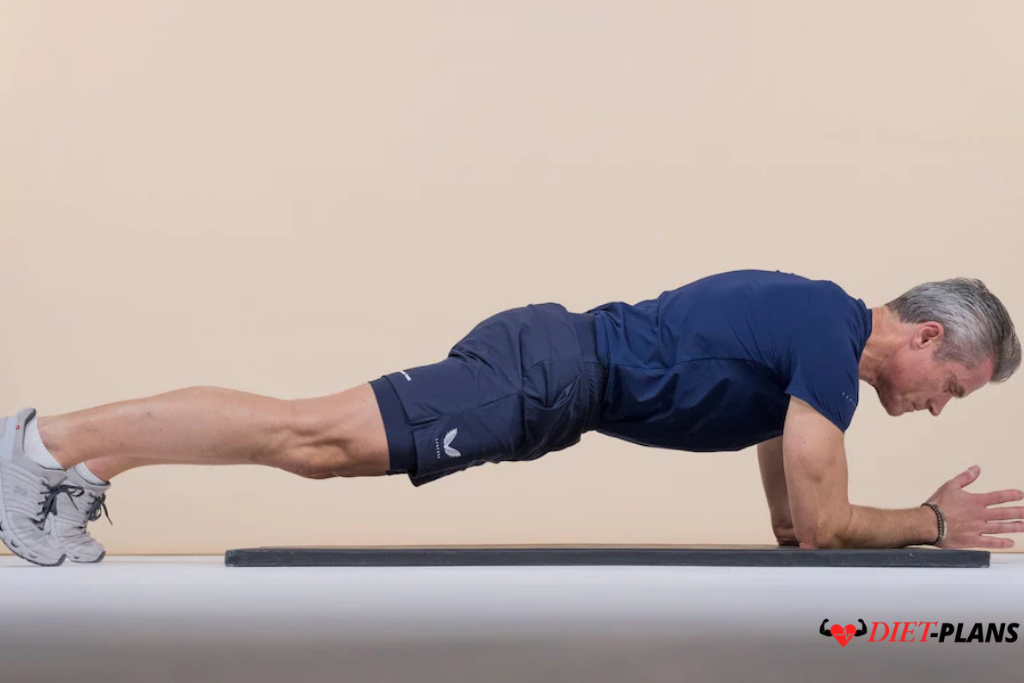9 Health Benefits of Regular Strength Exercise to Boost Your Body and Mind
The advantages of strength training in later life may be felt without a six-pack, and it’s simpler than you would imagine.
1. Strength Exercise for Flexibility and Weight Loss
Do you want to remain flexible until old age, reduce abdominal fat, and improve your memory? According to the most recent research, strength exercise is the greatest way to age-proof your body and brain, so grab some dumbbells. Gaining muscle is very beneficial to your health; it has nothing to do with having a six-pack or appearing toned and slender, though both are nice to have.
“Midlife strength training is crucial for preventing age-related decline,” explains Athalie Redwood-Brown, creator of Fiit for Life and senior lecturer in sports science at Nottingham Trent University.
“It increases mental wellness, enhances metabolism, fortifies bones and joints, lowers the risk of cardiovascular disease, and may even help prevent Alzheimer’s and dementia.”

Strength training decreases the risk of mortality from all causes by 23% over several years and the chance of death from cancer by 31%, according to 80,000-person research published in The American Journal of Epidemiology. More recently, over 450 healthy seniors were randomly allocated to various workouts by Danish researchers. According to research published online in BMJ Open Sport & Exercise Medicine, participants who began strength exercise with large weights had the greatest results in terms of retaining leg strength four years later.
2. Health Recommendations on Strength Exercise
The advantages are so obvious that the UK government advises all individuals to engage in at least two muscle-strengthening activities each week in addition to 150 minutes of moderate-intensity exercise. According to a University of Essex survey of 275,000 individuals, just around one in 20 people regularly engage in strength exercise, even though many of us aim to walk 10,000 steps a day.
3. How to Begin Strength Exercise
The good news is that you can develop a stronger physique without lifting weights. Any exercise that requires your muscles to withstand an external weight or force—including your body weight—is referred to as strength exercise or resistance training. Planks, squats, lunges, and even yoga positions like warrior and downward dog are all acceptable.
According to Dawn Skelton, a professor of aging and health at Glasgow Caledonian University, “It’s anything that makes your muscles feel warm, taut, and shaky.” Going to the gym and lifting weights is what individuals who are already strong do.
For others, it may be as simple as going up and down stairs repeatedly, carrying shopping bags onto the counter three or four times in a row, or doing serial sit-to-stands from a chair.
Squats, lunges, press-ups, calf raises, deadlifts, and tricep dips are examples of “compound” exercises that are perfect for beginners since they engage many significant muscular groups, including your thighs and core, and help you gain strength fast and safely.
4. Build More Powerful Muscles with Strength Exercise
Dr. Richard Blagrove, a senior professor in physiology at Loughborough University and a certified strength and conditioning coach, states that starting at age 40, we must engage in strength exercise to counteract age-related muscle loss.
“We can lose 1-2 percent of our muscle mass annually if we do nothing.” A sedentary individual may have half the muscle mass they had in their 20s by the time they are 80. Sarcopenia is an age-related decrease that raises the risk of metabolic diseases like diabetes, makes everyday living more difficult, and may cause falls and frailty.
However, according to Dr. Blagrove, muscle loss may be virtually stopped with the correct strength exercise regimen. “You’ll feel stronger in weeks if you start with bodyweight exercises,” he adds. “You become more proficient at every exercise and everyday tasks feel easier as your nervous system swiftly adjusts and recruits more muscle fibers.”
5. Improve Your Bone Health with Strength Exercise
If you want to avoid fractures and falls later in life, start doing strength exercises. One of the main advantages of strength training, according to Redwood-Brown, is improved bone health. “The mechanical stress encourages the growth of thicker and denser bones.”
Bone density starts to decrease by about 1% a year after midlife. Due to declining estrogen levels, this speeds up after menopause, when women may lose 10–20% of their bone density, raising their risk of osteoporosis. It has been shown that strength exercises and high-impact exercises like explosive leaping and skipping may prevent bone loss.
6. Keep Your Heart Safe with Strength Exercise
The British Journal of Sports Medicine (BJSM) found that only 30 to 60 minutes of muscle-strengthening exercise each week may reduce your risk of cardiovascular disease by 10–20%. “By increasing artery elasticity and fostering improved blood-vessel function, resistance exercise lowers blood pressure,” says Dr. Lewis Macgregor, a lecturer in physiology and sports nutrition at Stirling University.
“It improves glucose metabolism, lowers blood-sugar levels, and helps prevent plaque buildup and blood vessel damage, which can lead to heart disease.”
7. Increase Fat Burning with Strength Exercise
Are you using the treadmill for hours on end yet failing to lose weight? Incorporate lunges and squats into your workouts. Mitch Raynsford, a strength and conditioning coach and personal trainer at P3rform, says, “Everyone thinks, ‘If I do more cardio, I’ll lose more weight,’ but strength exercise is the best exercise for fat loss.” Even while at rest, muscle burns more calories than fat because it has a higher metabolic activity.
8. Prevent Diabetes with Strength Exercise
If you’re concerned about getting Type 2 diabetes, there’s good news. Strength exercise may help you manage your blood sugar levels and prevent the crippling illness and heart disease and stroke dangers that come with it. According to Dr. Macgregor, resistance training makes your muscles more efficient at absorbing glucose from the circulation by raising their demand for the energy source.
9. Reduce Joint Discomfort and Pain
Are you sick of back pain, tight joints, or nagging sports injuries? According to Dr. Blagrove, “Resistance exercise reduces wear and tear from repetitive movements like walking, climbing stairs, and daily tasks by strengthening your tendons, ligaments, and the connective tissue within your joints.”
Strength training keeps you flexible, improving joint health through range by doing resistance exercises through a wide range of motion.
10. Prevent Alzheimer’s with Strength Exercise
Strength training has been shown to improve memory, speed up thought processes, promote brain plasticity—all of which are essential for learning—and shield grey matter from aging-related deterioration. Researchers at the University of Sydney demonstrated in 2020 that consistent strength exercise slows down the deterioration of the hippocampus, a part of the brain linked to Alzheimer’s disease.
11. Boost Your Immunity with Strength Exercise
You may be able to prevent winter flu and colds by lifting weights. According to Skelton, “Having strong muscles is essential for healthy immunity.”

